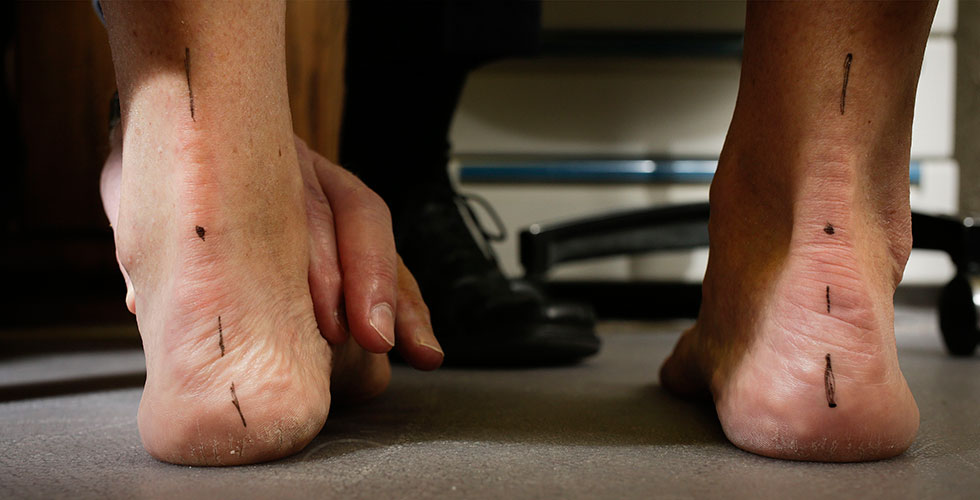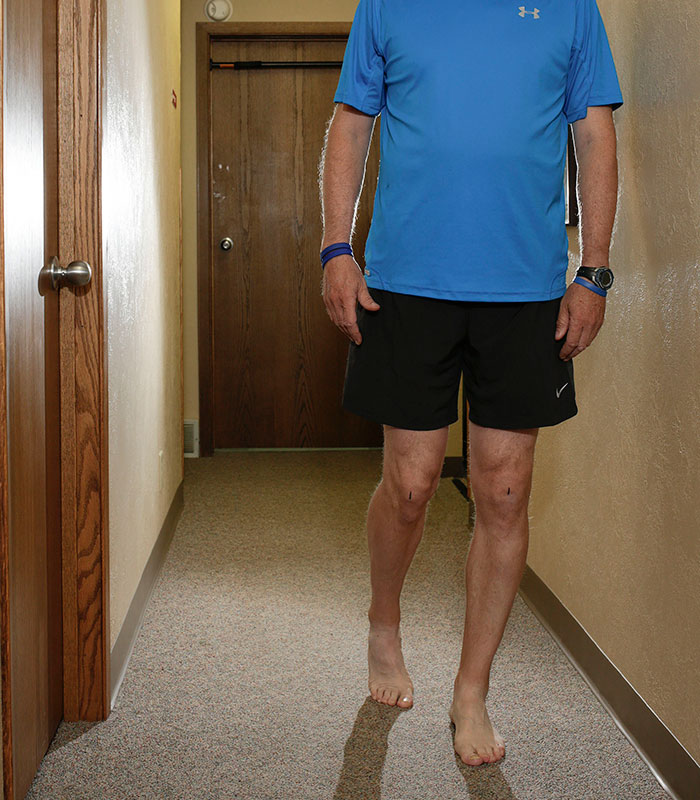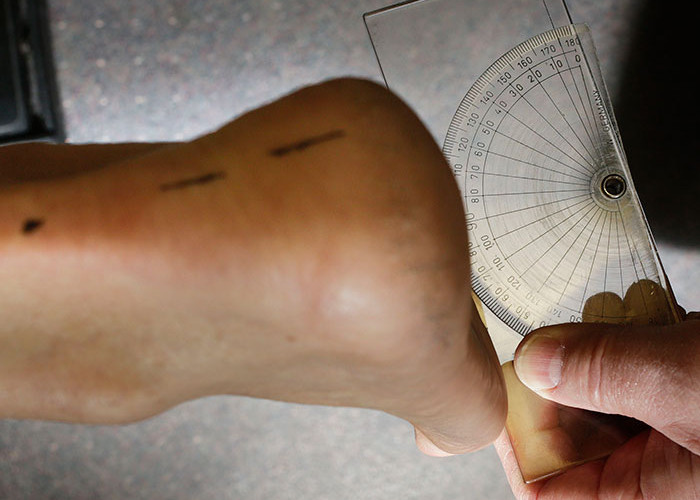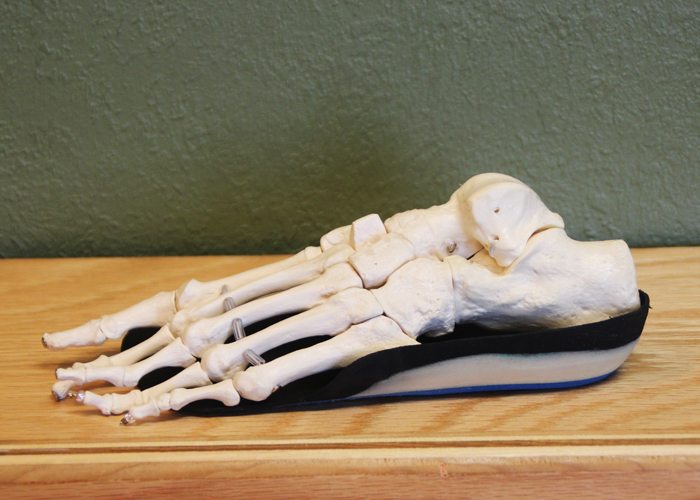Alignment and Motion

Podiatrists and others who make orthotics must fully understand the science of biomechanics – the study of the physics of the body in motion.”
— Dr. Paul Coffin
What is Biomechanics?
Biomechanics is a study of motion – body movements and the forces acting on the musculoskeletal system. Correct alignment allows for more normal use of the muscles and tendons to create efficient motion.
Some people inherit less than optimum foot types or suffer traumatic or chronic injury to the feet. The foot has 26 bones and numerous tendons and joints. When a part of the foot or ankle is not correctly aligned, it can’t work correctly and gets injured. Athletes may become injured more quickly because of the constant and intense pressure on these mis-aligned joints and tendons.
These people need to be treated by someone with a thorough understanding of how to correct the problem while maintaining pain-free motion. At times surgery is a necessary option for a foot problem, but only after trying more conservative treatments that should include an evaluation of the patient’s structural anatomy and mechanics of their gait.
Dr. Coffin achieves successful outcomes by correctly aligning the foot, knee and hip joints. He does this with highly conformed orthotics that match exactly to the shape of the foot and align the “hinges” of the lower body. Many orthotics try to accomplish the alignment with hard materials that inhibit normal motion of the feet. Dr. Coffin’s flexible, non-compressible materials allow the foot to twist normally while walking, still holding the foot in optimum position.



